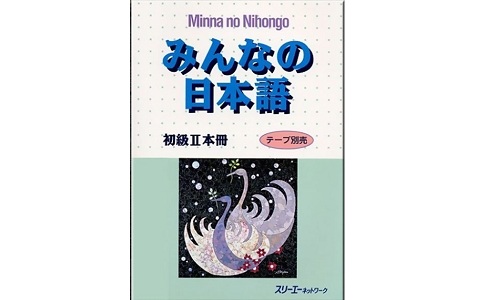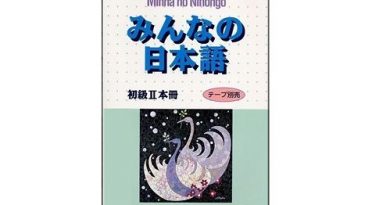Learn minna no nihongo lesson 5
Learn minna no nihongo lesson 5. hi everyone. In this post, Learn Japanese Daily will introduce you the very first lessons in the Japanese course-book : Minna no nihongo (Japanese for everyone)
Learn minna no nihongo lesson 5:
Summary :
In the lesson 5 learners will learn about the topic “National holidays”. In this lesson learners will keep continue with the vocabulary part about days, months and structures. At the end of the lesson, learners need to understand all the vocabularies and structures.
First part is vocabulary. There are 5 subjects: verb, transport, nouns, time and location.
There is only 3 verbs:
いきます: to go
きます : to come
かえります: return, go back
In transport:
ひこうき : airplane
ふね: ship, boat
でんしゃ: train
ちかてつ : subway
しんかんせん : bullet train
バス : bus
タクシー : taxi
じてんしゃ: bicycle
あるいて : to walk
ふつう : normal or ordinary train
きゅうこう : train that by passes
とっきゅう : train that limited express
Person nouns:
ひと : person
ともだち: friend
ひとり : one person, alone
かぞく : Family
Next, days and week:
せんしゅう : last week
こんしゅう : this week
らいしゅう: next week
せんげつ : last month
こんげつ : this month
らいげつ : next moth
きょねん : last year
ことし : this year
らいねん : next year
がつ : month
なんがつ : what month
ついたち : 1st day
ふつか : 2nd day
みっか : 3rd day
よっか : 4th
いつか : 5th
むいか : 6th
なのか : 7th
ようか : 8th
ここのか 9th
とおか : 10th
じゅうよっか : 14th
はつか: 20th
にじゅうよっか : 24th
にち : day
なんにち : what day?
いつ : when?
つぎの : next
The last is about location:
がっこう : school
えき : station
スーパー : supermarket
Next, the Grammar part.
In lesson 5 will has 6 structures, mostly about the uses of verbs. The first structure related to 3 verbs that appeared in the vocabulary part. It is いきます to go and きます to come, かえります to return.
The structure form is:
Nへ いきます・きます・かえります. It means to go and to return N. In here N is the location nouns.
Practical へ although it writes へ but when pronouncing it isえ. It has characteristic that are combined in sentences with verbs that indicate movement and stand after location nouns.
For example: “I go to Tokyo” then it will be: とうきょう へいきます, Or 日本へきました means “I came to Japan”,
How about “I go home”. The answer is うちへかえります. Remember that the practicalへ is only use in sentence that indicate movement.
If you want to ask about the location, then you have to say どこto replace the noun,
The practical and verb is preserved and attach withへ means go to/come to where?
So we have learned how to say “I go to Tokyo” or “I go home”…
In case you want to say “I don’t go anywhere?” it is どこもいきません・いきませんでした. Of course, the verb need to be in negative.
Practical も in the above sentence replace へ is to completely negate the subject. Another example: “I don’t study anything” then the sentence will be: 私は何もべんきょうしません.
To go/come/return we will use the practical へ
For instance how do we say to go/come/return by something…? The answer is practical で, transport nouns combine with practical で attach with 3 verbs いきます・きます・かえります means to go/come/return by N, it shows the way to move.
For example, “I go by train” 私はでんしゃでいきますor “I came here by taxi” 私はタクシーできました.
Notice that, this is examples by about using transportation, if go on foot we don’t useで,
For example: “I walked from the station to home” We will say 私は えき からあるいて かえります.
If we want to make a question about transport nouns. The question word will be なん replace the noun, means go/come/return by what?
The fourth structure is NとN. Means doing something with N, in here N is nouns.
When doing something with an object, even with human or animal, we will use the practical と. For instance, かぞく とフランスへかえました (The one doing the action is me) and the last subject is family, that’s why we say かぞくと, this sentence means i went to France with my family.
There is one thing you need to notice, that is the practical と, it is only used when doing something with an object, we can’t use it when doing something alone.
For example: “I go to Japan alone” …ひとりでにほんへいきます in this sentence don’t have と. To make a question for person noun, means go/come/return with who, the question word is だれ, but the practical とand the verb is not changed, only putか at the end of sentence.
From the beginning of this part we have learn some structures about time,
but, we haven’t learned to ask about when right?
In the structure 5 is いつ。When using いつ we don’t use practical に.
For example, I want to ask: “When do you go to Japan?” いつ日本へいきますか. To answer the question, if we answer with specific time such as 3rd of March 三月三日 に, if your answer has no specific time then you don’t have to answer withに . “I will go on 3rd of March” 三月三日にいきます
The last structure you will learn is with よ, the wordよ stand at the end of sentence to emphasize the information to the listener. For example, to emphasize the train go to Kyoto
この でんしゃは京都へいきますか means “Is this train go to Kyoto?” it will be いいえ、いきません、つぎの ふつうですよ means “No, it isn’t, the next ordinary train.”
So, we have already finished all 6 structures.
Next, is the dialogue
The situation is: Aki and Tanaka talk to each other to plan about their holiday.
Aki: 田中君、休みは何をしますか “Tanaka, what will you do in your holiday?”
Tanaka: フランスへいきます means “I will go to France.”
Aki: そうですか。だれといきますか “Really, who will you go with?”
Tanaka: ああ、かぞくといきます “I’ll go with my family”
Aki: たのしいですね、なんでいきますか “That’s fun, how do you get there?
Tanaka: ひこうきでいきますよ。あきちゃんは. “By plane, what about you?”
Aki: うちで本をよみます “I will stay at home and read book.”
Tanaka know that she won’t go anywhere in this holiday he say:
そですか。プレゼントをか ってあげますよ “Oh, I will buy present for you”
Aki: ええ、ありがとう “Thank you”
Above is Learn minna no nihongo lesson 5. Check out other similar lesson in category : learn japanese for beginer or learn japanese with minna no nihongo. We hope with the instruction in this post, you will find that learning Japanese is not so difficult and you can learn Japanese by yourself. If you have any question, just leave us your question below the post.
Stay with us on :
Facebook - Twitter - Pinterest - Reddit



